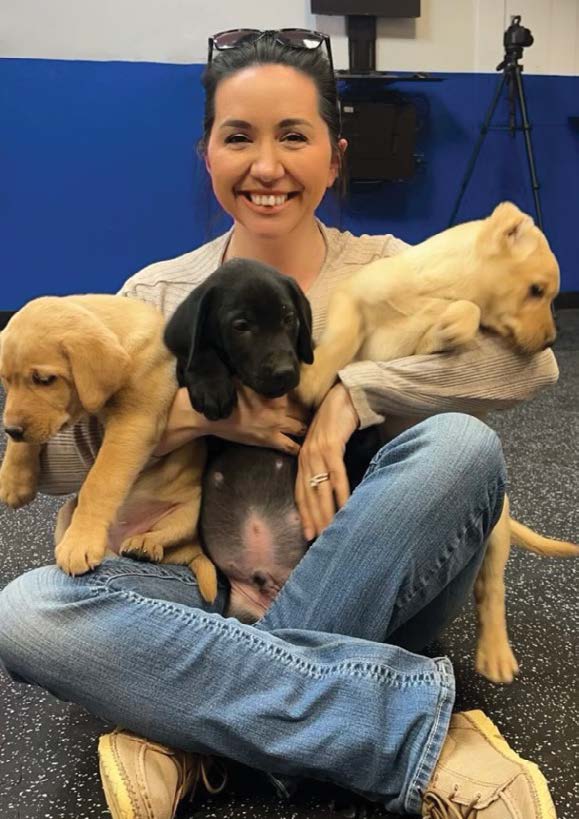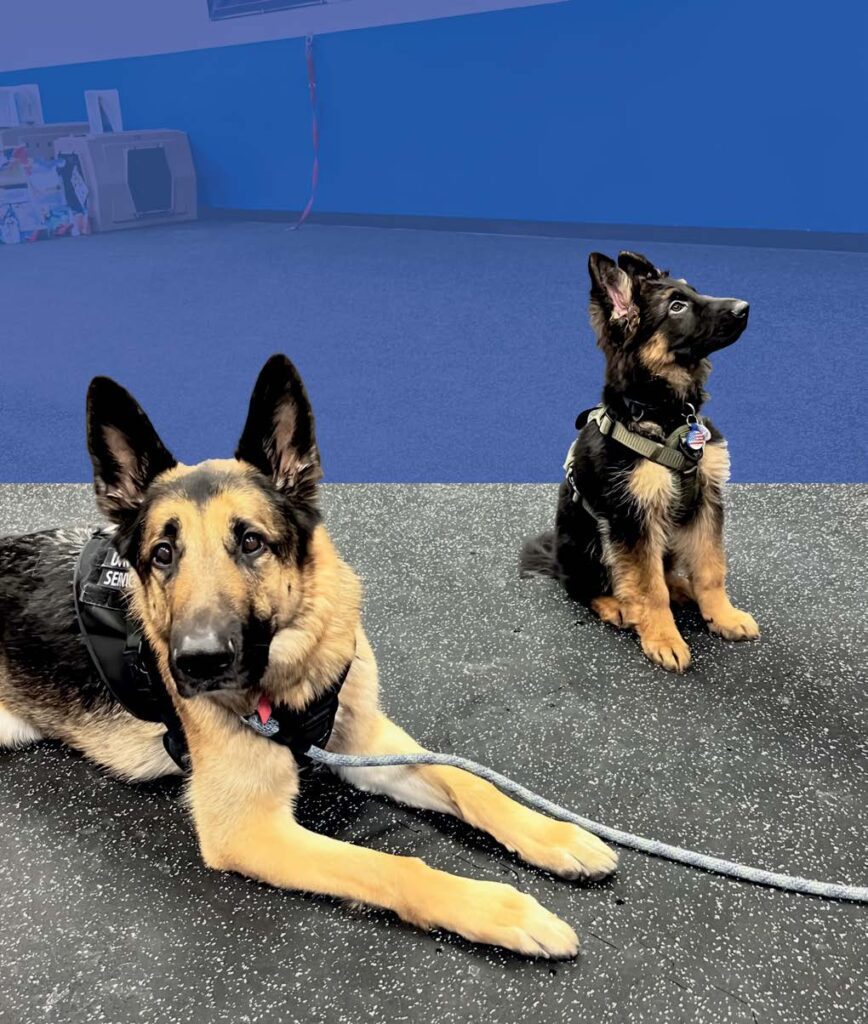What a service dog is doing for its handler, explained South Dakota Service Dogs Executive Director and founder Tony Russell, is simple but powerful. “When you break it down to the smallest level,” he said, “it’s very basic. All this dog has to do is literally lie there. What he does for me — for someone with PTSD or anxiety — is an odor detection task. So, as long as he is within three to six feet of your odor bubble — depending how pungent you are — he’s able to detect adrenaline and cortisol levels.”
Dogs naturally have the ability to smell these human stress hormones. A service dog becomes familiar with its handler’s baseline body chemistry, so if the dog detects a spike in one of these stress hormones, it can be trained to alert its handler three to five minutes before these spikes result in a panic attack or other episode. “That’s huge,” Tony said. “You’re then able to remove yourself from a situation or maybe get to a corner of the room where you feel safer and you can work through it with your dog.”
Tony and his wife Eleanor founded South Dakota Service Dogs in 2021 “to provide Service Dogs to Veterans and First Responders in order to give them back the quality of life they deserve,” according to their mission statement. In the short time since its start, this organization has grown tremendously. “We’ve had to be good business people,” Tony said, “and come up with a five-year plan and then a 10-year plan and all those things have just been blown out of the water. We’re just like, what is going on? This is crazy!”
In a little under three years, South Dakota Service Dogs has connected nearly 200 veterans and first responders with potentially life-saving canines. Tony chalks this rapid expansion of this young organization up to the people of the Black Hills. “It’s really just the community that we live in and the generosity and the people that are here that have supported us.”
How all it started


While serving in the Air Force, Tony sustained a major injury that left him in a coma. Through his long road of treatment and rehabilitation, his doctor recommended that he be paired with a service dog. “I was at Walter Reed for three and a half months. The doc suggested I get a service dog. We applied to a national organization,” Tony recounted. “That organization was going to charge us $20,000 and it was going to take two years for them to raise this dog. All that did was put a huge roadblock into my recovery.”
Stories like Tony’s are unfortunately common. Service dogs are often recommended to effectively aid veterans in managing PTSD, anxiety and other conditions. The efficacy of service dogs is well-documented; however, veterans like Tony usually discover humongous obstacles in being paired with one of these life-changing animals.
In 2020, Tony received a lifeline when the Rapid City Rush hockey team gave him a service dog, trained by the team and staff. Aptly named Rush, this service dog helped Tony reconnect with his wife and two sons.
Rush changed Tony’s trajectory in life, and this left him asking some critical questions. “If a hockey team can do this, then why can’t we?” So, the Russells committed to training a puppy to serve as a service dog to help a veteran. “Then someone came to us and was like, ‘Hey, if you’re going to raise one dog, you mind raising two?’” Tony and Eleanor knew that someone needed to step up to help connect veterans and first responders with service dogs in the Black Hills; they just didn’t realize how quickly their new venture would grow. “At one point, we had six puppies in our house, plus Rush,” Tony said.
Today, South Dakota Service Dogs has a training facility located in the Uptown Rapid Mall and at the time of this writing, has connected 178 service dogs to veterans or first responders. “But there’s still a whole lot more people who need help,” Tony said. The last VA survey indicated that there’s approximately 17,000 disabled vets in South Dakota, and, tragically, on average, 22 veterans take their own life each day nationwide. “We still got a pretty big mission ahead of us,” Tony said.
If you’re a veteran or a first responder, you can start the process to be connected with a service dog at southdakotaservicedogs.com/apply. If you’re interested in partnering in the mission of SDSD, visit southdakotaservicedogs.com/donate.

